Festivals & Events
Celebrations for many cultures, all year around.
Come join in Malaysia’s seemingly never-ending festivities, celebrating culture and heritage of diverse ethnic groups. Malaysia has a public holiday calendar for all major festivals in respect of each and every one of the country’s major races, and is known for the celebration of Hari Raya (Eid al-Fitr and Eid al-Adha), Chinese New Year and Deepavali among others.
Festivals
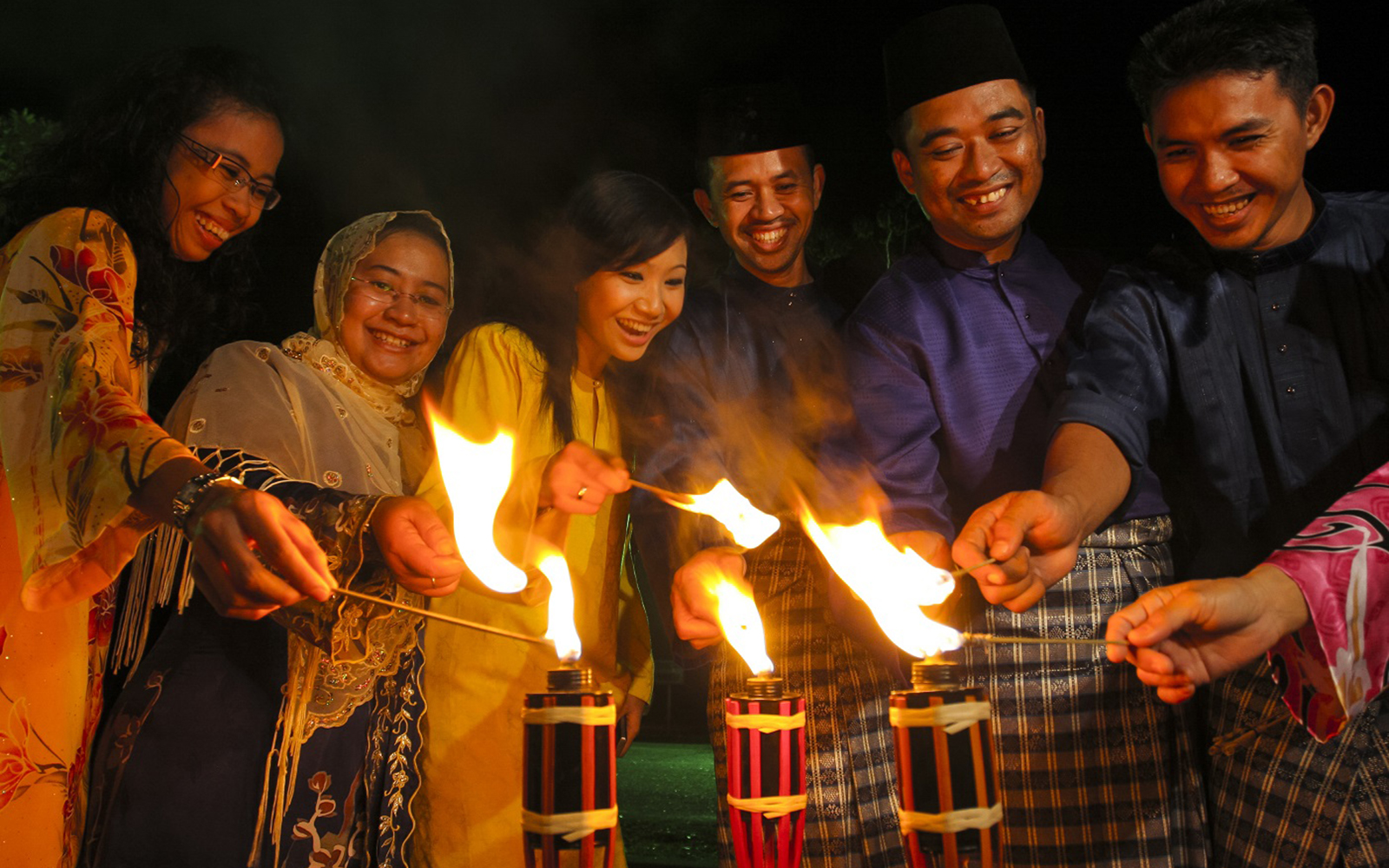
The idea of traveling in Malaysia during Ramadan, the Islamic holy month when Muslims fast from sunrise to sunset, may make some people uneasy. On the contrary, it’s actually a great time to travel. Not only can you avoid going hungry while traveling during Ramadan, but you also can enjoy some unique Malaysian experiences that are only possible at this time of the year.
Being one of the most joyful festivals in Malaysia celebrated by Muslims across the country, Eidul Fitri marks the end of Ramadan, the holy month of abstinence and fasting. Muslims would ‘balik kampung’ (head back home) to join the festivities and participate in special prayers held at mosques. The celebration is marked with feasting and house-visits as well as asking for forgiveness from friends and family members. The most wonderful part is the Open House where all Malaysians open their doors and shower warm hospitality on all guests, with traditional delicacies and desserts.
The celebration periods change based on the end date of Ramadan, which follows Islamic calendar.
Hari Raya Eid al-Adha
Eid al-Adha marks the conclusion of the annual pilgrimage to Mecca. It is celebrated on the 10th day of Dhu al-Hijjah, the 12th month of the Muslim calendar. The day starts with prayer in the mosque and is followed by the free will offering of cattle or goats to be slaughtered and shared with the needy. Visiting friends and family is a common practice observed during this festival.
Chinese New Year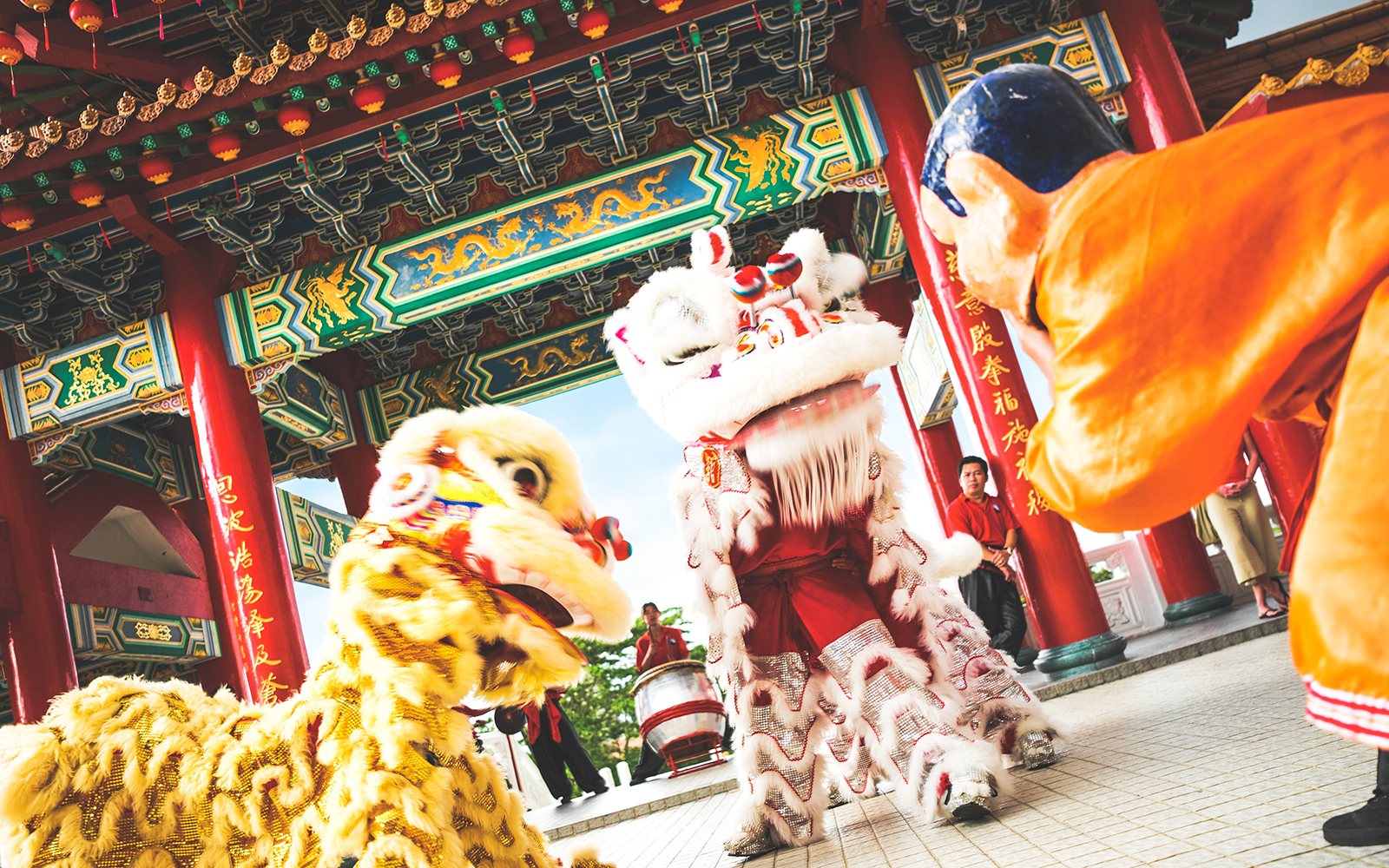
Perhaps the most rewarding time to travel to Malaysia when everywhere is abuzz with various activities. The Chinese festival in Malaysia is a grand cultural celebration that lasts for 15 days starting from the first day of the lunar calendar. Chinese New Year is celebrated throughout the country and many Malaysians would ‘balik kampung’ (head back home) to their families. The festivities would kick off with a reunion dinner on New Year’s Eve and follow by paying a visit to the temple to seek blessings from the God of Prosperity.
It is the favorite time of the year for the children as ‘ang pows’ (red envelopes containing money) are handed out by elders for their blessing and ensuring good health throughout the year.
The concept of open house is unique and only found in Malaysia where it is the time of the year to share and welcome friends and families into your home during the celebration. Guests would bring mandarin oranges and stacks of ‘ang pows’ to wish the host good health and prosperity.
If you’re one of the lucky ones to be invited to an open house, remember to dress up in red, the color of prosperity and be ready to experience some spectacular lion dance performances and firecrackers blasting. There are some majestic places to visit in Malaysia during Chinese New Year that allow you to relish this festival to the fullest, so make sure to check them out as well.
The Chinese New Year usually starts in mid-January to mid-February.
Deepavali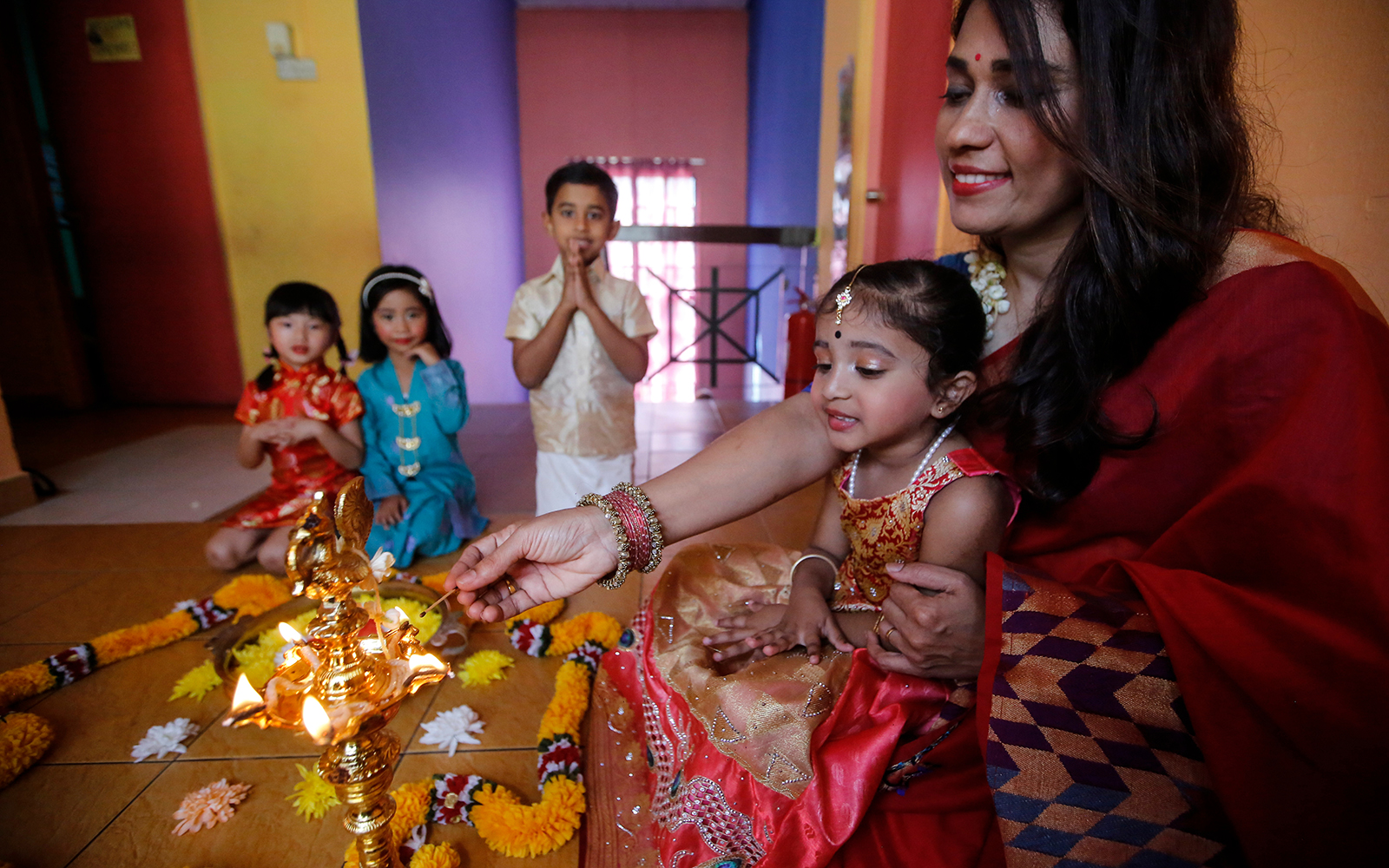
Malaysia may be a majority Muslim country, but its other faiths, Christianity, Buddhism and especially Hinduism, are well represented. Diwali, known as Deepavali in Malaysia, is one of the Hindu faith’s most beloved festivals, which marks the triumph of good over evil.
Also known as ‘Festival of Lights’ the occasion is celebrated with just as much enthusiasm and excitement as other major celebrations. Witness the lighting of candles, creation of intricate artwork made from colored rice or flour and sharing of food with friends and family. Each night of the five-day festival serves a different purpose, one of them being an open house, which brings together Hindus, as well as those not of the faith in Malaysia, under one celebration.
Deepavali is usually held sometime in late October or early November.
Thaipusam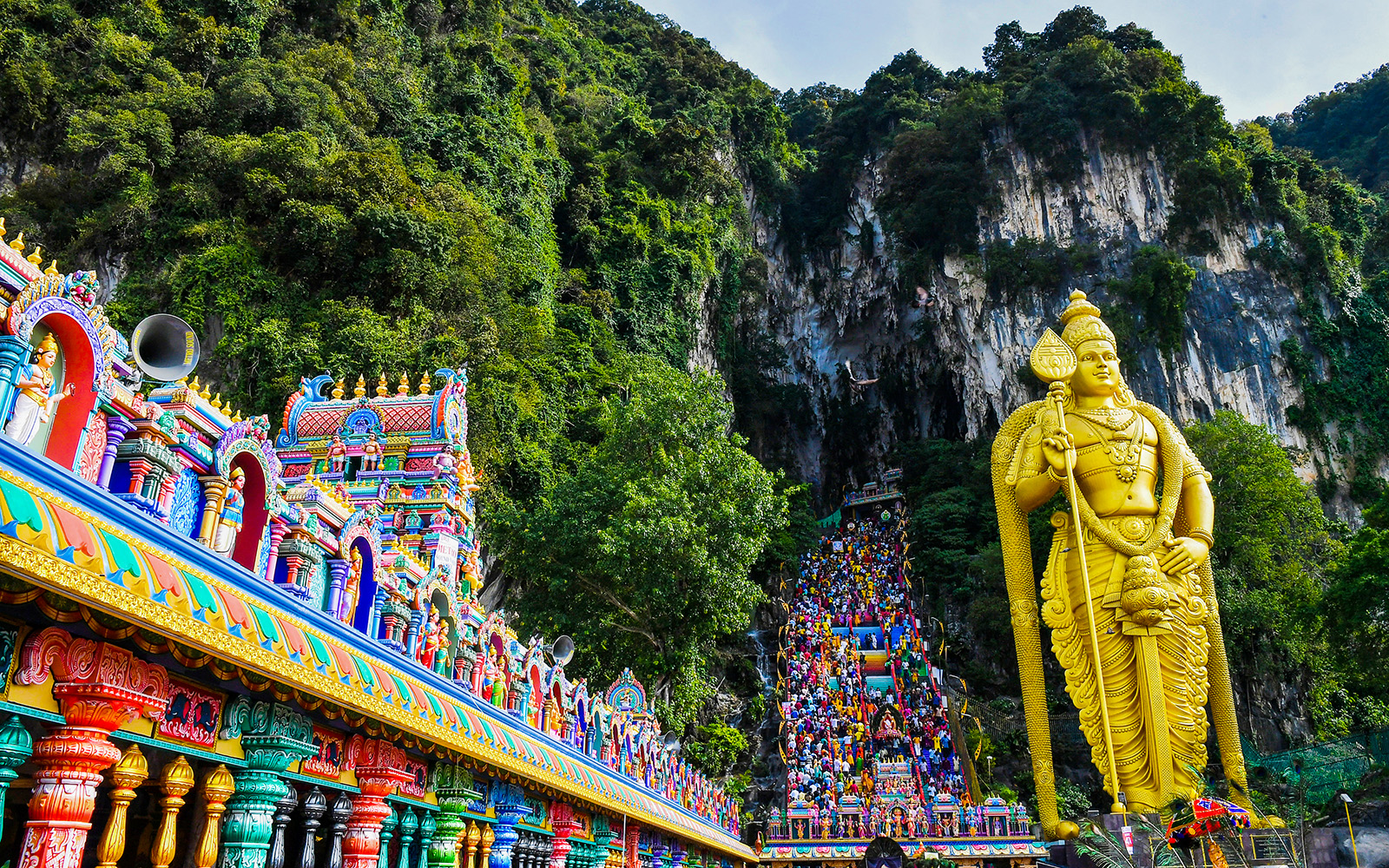
Thaipusam is one of the most spectacular, unusual, and awe-inspiring religious festivals in the world. The word Thaipusam is formed by combining the two words, Thai, name of Tamil month, and Pusam, name of a star. Thaipusam is observed on the Purnima (full moon day) during the month of Thai. The festival is celebrated by Tamil Hindis to reflect the victory of Lord Murugan, who is the Hindu God of combat. While the celebration takes place throughout Malaysia, the one in Kuala Lumpur is the largest. It is held at Batu Caves, which is a home to several temples that are absolutely spectacular and fascinating.
The actual event is one day, but activities last over several days starting when the statue of Lord Murugan, a Hindu deity and son of Shiva and Parvati, is brought out of his home Sri Mahamariamman temple in Chinatown, KL and taken to many important temples around the city visiting his family of gods. At the moment he emerges, a pilgrimage starts. Hundreds of followers start the journey, most barefoot, from Chinatown to Batu Caves. Many carry milk or statues of Lord Murugan. Some make the journey as hard as possible by doing it on their knees, carrying huge chariots, and piercing themselves with various spikes. It is a sight to behold!
The celebration takes place sometime in January or February.
Tadau Ka’amatan Harvest Festival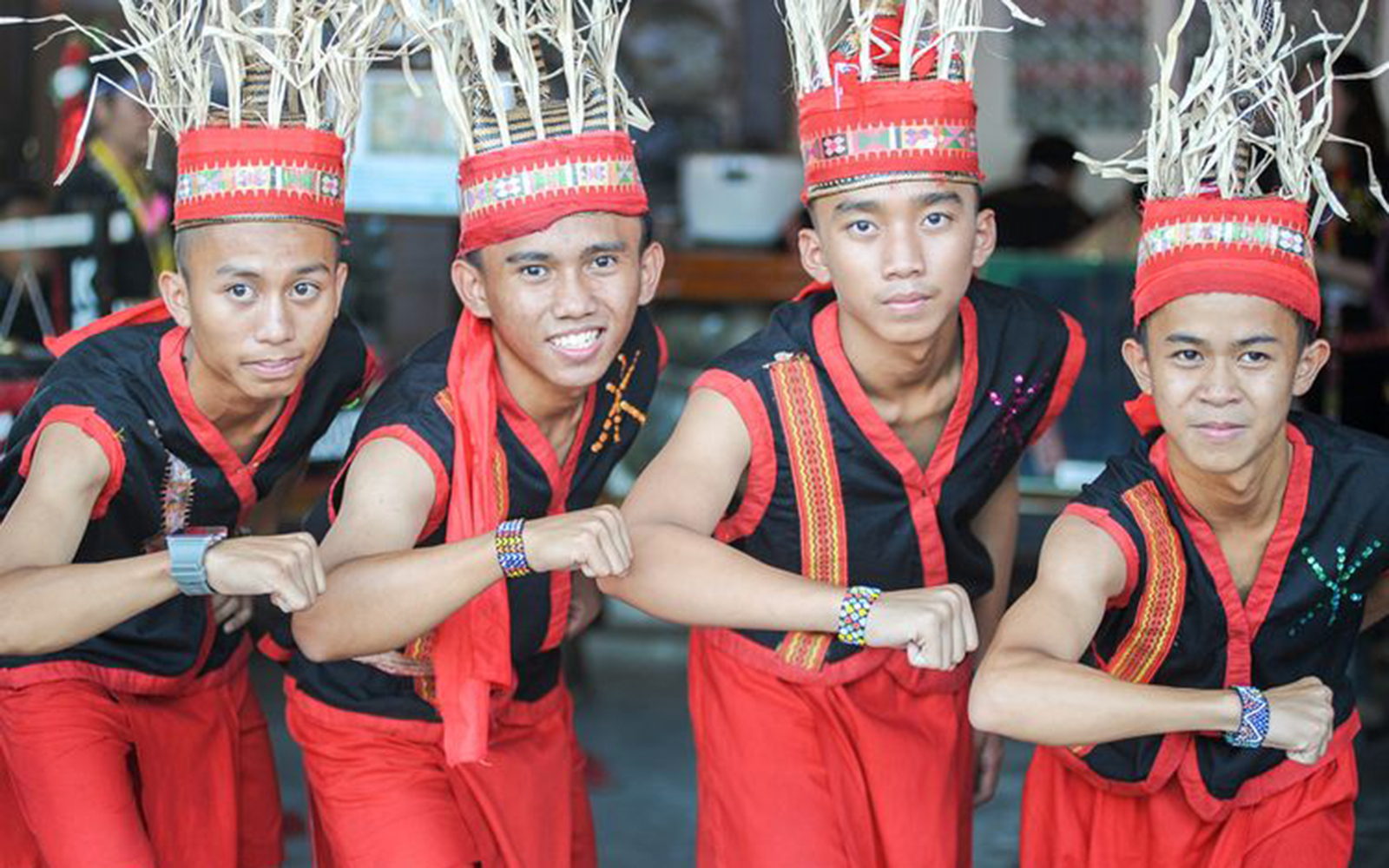
This native festival of Kadazan-Dusun, the largest ethnic group in the state of Sabah in Borneo, is essentially a celebration to thank the holy spirits for a bountiful harvest. Padi (flooded field of arable land) farmers congregate to honor ‘Bambaazon’, the spirit of rice padi through traditional rites and customs followed by festivities. The headquarters of Kadazan Dusun Cultural Organization (KDCA) hold ethnic dance performances as well as the display of traditional sports like arm-wrestling, blowpipe shooting, and etc.
The Ka’amatan Festival is also a great opportunity to sample traditional local food and drinks which include the fascinating ‘lihing’ or ‘tuak’ (local rice wine as in the picture above) where they are found in the traditional houses at the KDCA. Free-flow of those local rice wines, adds to the spirit and fervor of one of the most interesting cultural festivals in Malaysia.
The festival takes place at the end of May.
Sarawak Gawai Festival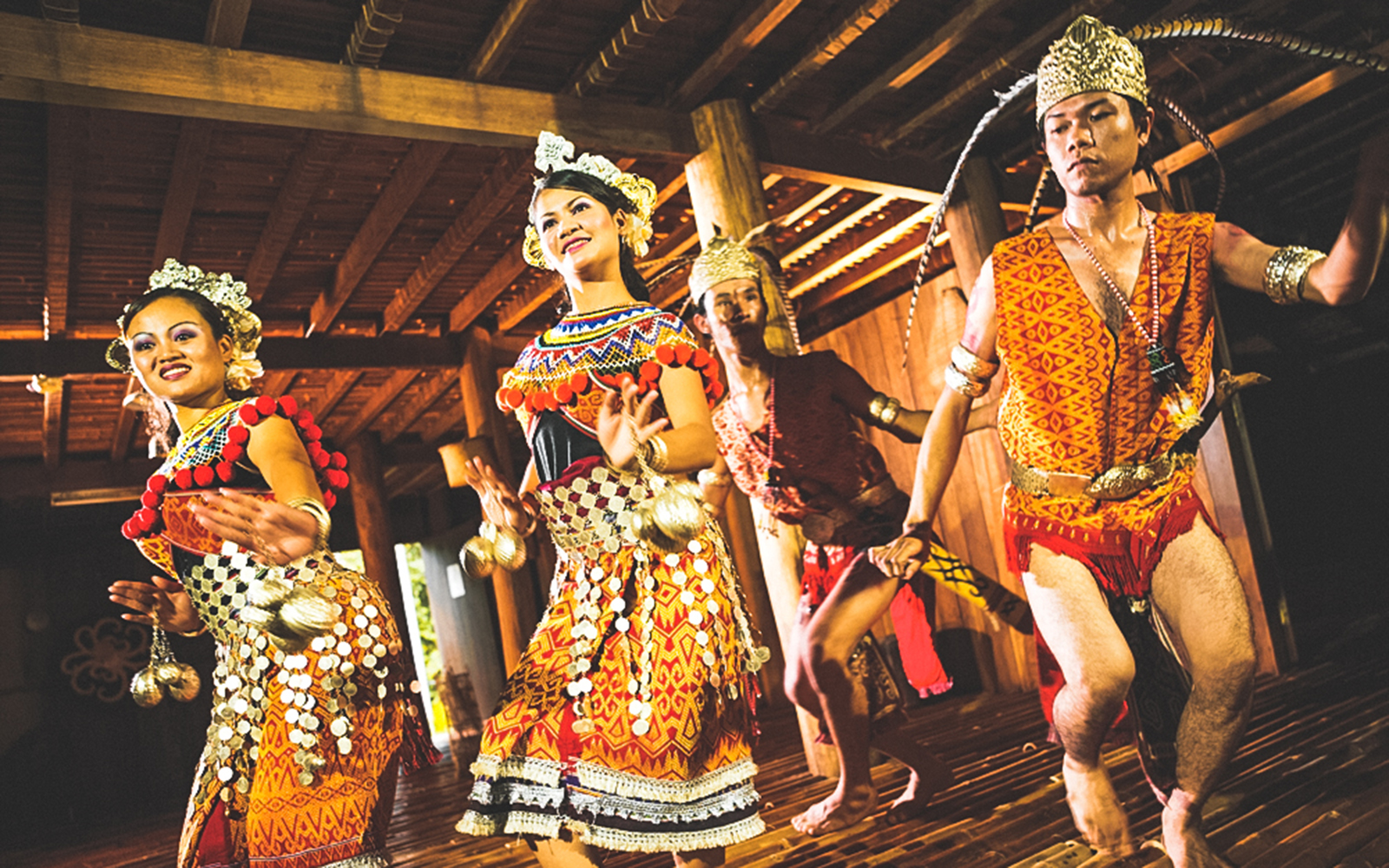
Celebrated by the indigenous Dayak race of Sarawak, Malaysia’s largest state, this festival is one of the most important harvest festivals in Malaysia. It begins in June and goes on for a whole month. The Dayaks dress in their traditional attire, indulge in a fascinating ceremonial offering and welcome the New Year with gusto. The best place to witness the celebration in full glory is a longhouse, the traditional Dayak home with over 40 families residing under the same roof! Traditional dances, feasting and free-flowing ‘tuak’ (rice wine) add vigor and charm to the celebrations.
Christmas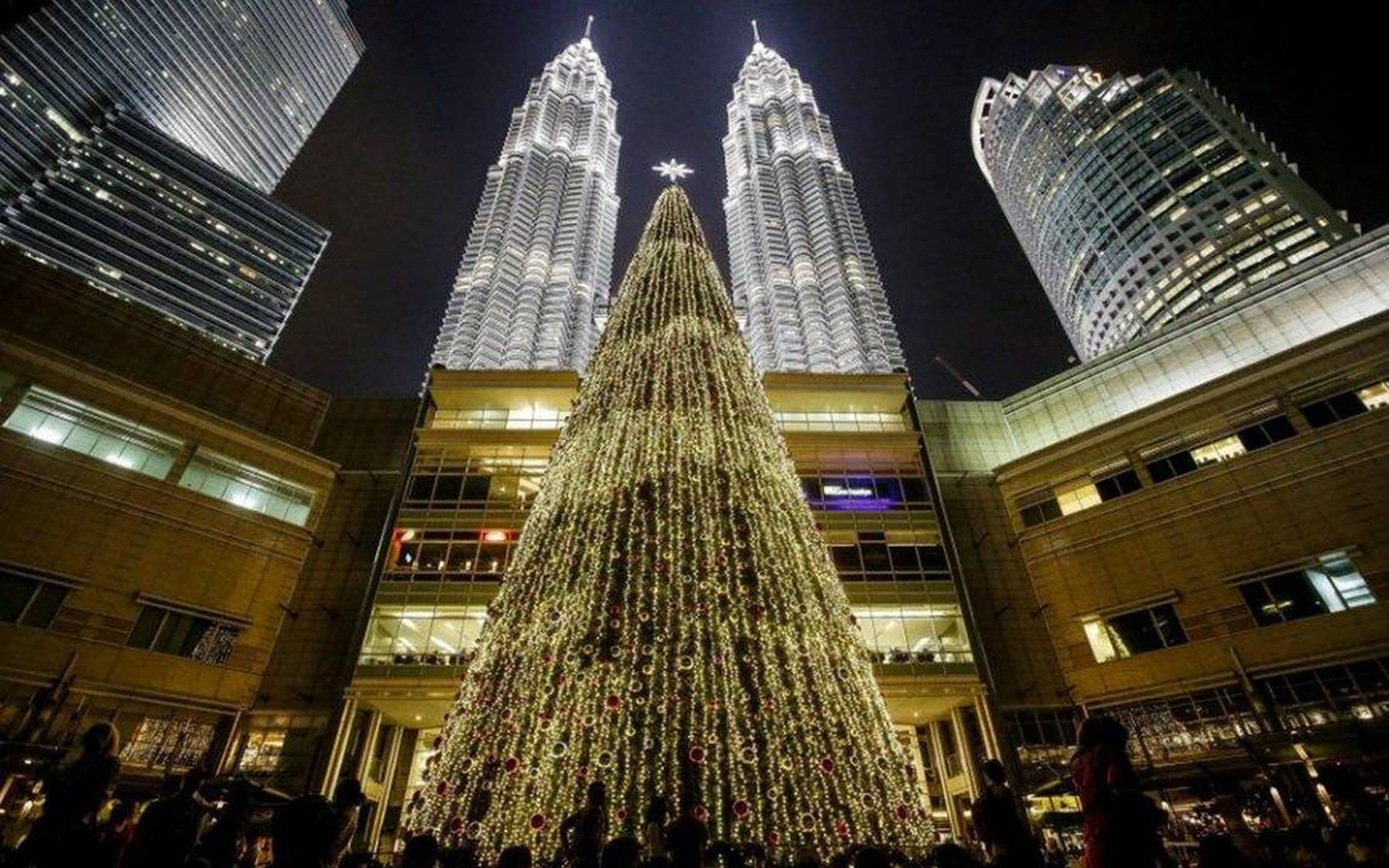
Christmas is popular all over the world and there’s no way Malaysia would fall behind in celebrating such an important festival. Malaysians may have their own ways of commemorating the birth of Jesus Christ, but it’s still one of the jolliest festivals. Though you won’t find a traditional “white Christmas” here, the celebrations here involve everything from lights, Christmas displays, carols, food, plum cakes, decorations, and crazy shopping deals for locals and tourists alike!
Events
National Day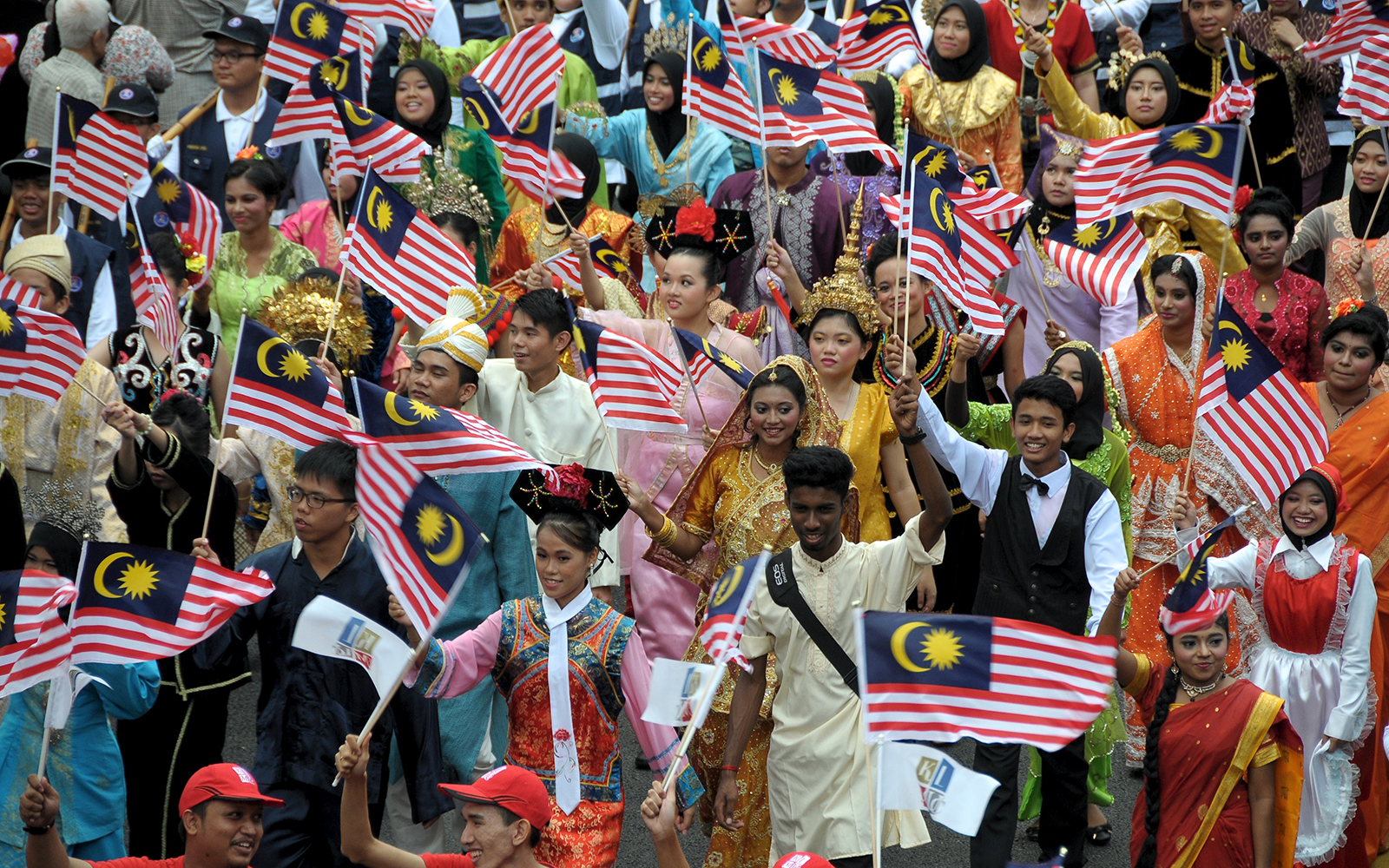
Celebrating the country’s independence from British rule on August 31st, 1957, Hari Merdeka is one of the most glorious festivals in Malaysia that must not be missed if you’re in Kuala Lumpur around this time. Spectacular fireworks on the eve of Independence Day, a grand parade at Merdeka Square in the morning and concerts as well as performances all throughout the day mark this important day in the life of Malaysians. Parades, stage shows and exhibitions are held all over the country, but the fervor in Kuala Lumpur can’t be beat. If you want to witness the grand celebrations in Malaysia, then you must attend this festival.
Rainforest World Music Festival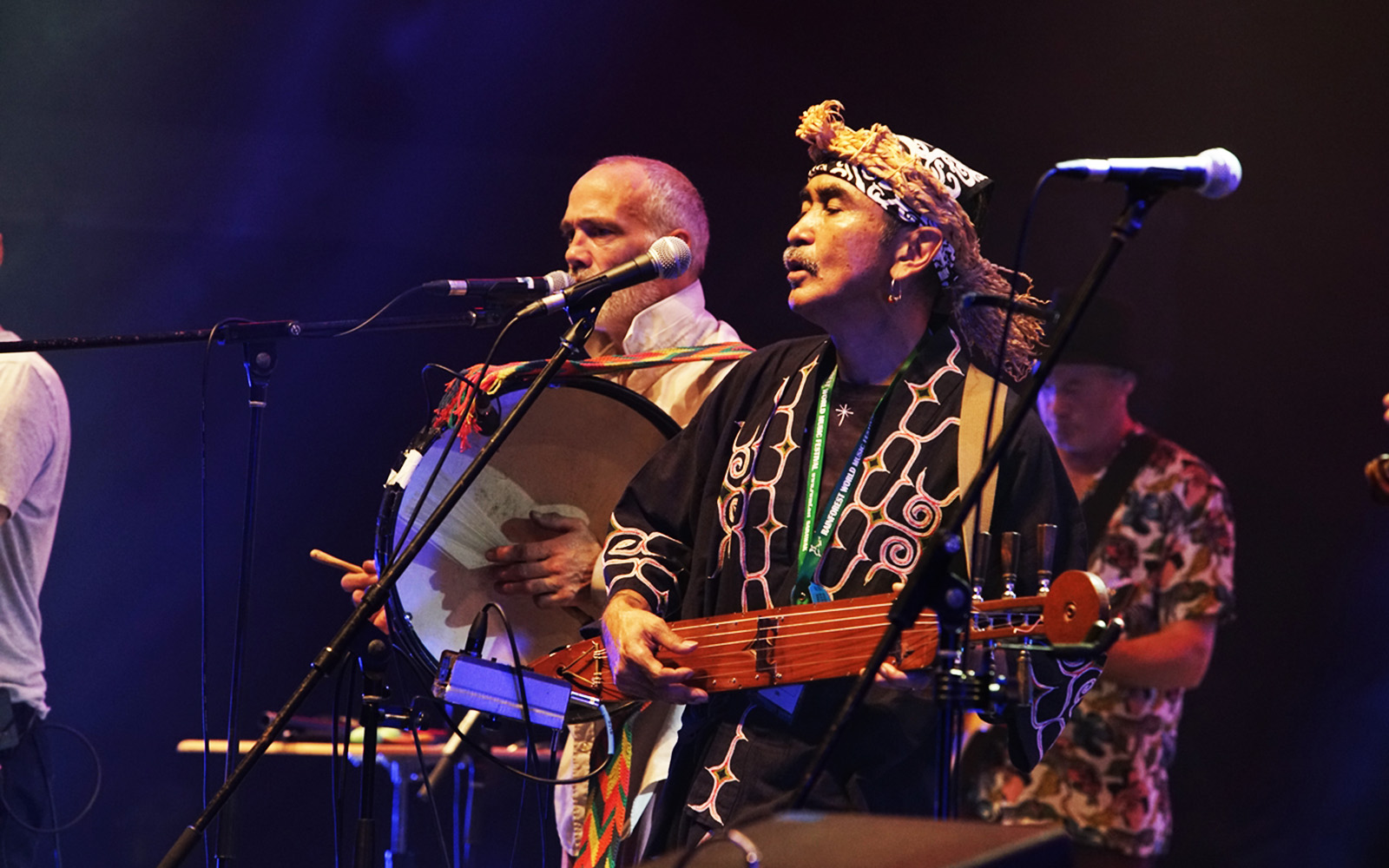
Not many musical gatherings can beat the excitement of gyrating to foot-stomping music in the rainforests of Borneo with thousands of music enthusiasts from around the world. One of the most spectacular music festivals in Malaysia and among the largest in Southeast Asia, Rainforest Music Festival is a heady mix of live performances by top-notch international artists, cultural experiences, and workshops. Head to the Sarawak Cultural Village for an unforgettable 3-day musical extravaganza.
There’s more to the festival than nightly shows. There are wellness programs, jamming sessions, and hands-on workshops where the audience can learn how to play indigenous instruments. And when we say that acts and audiences tend to be from different walks of life, that’s no exaggeration. For starters, the festival is held in Sarawak’s rainforest which is home to 27 ethnic groups!
The festival usually takes place in July.
Royal Langkawi International Regatta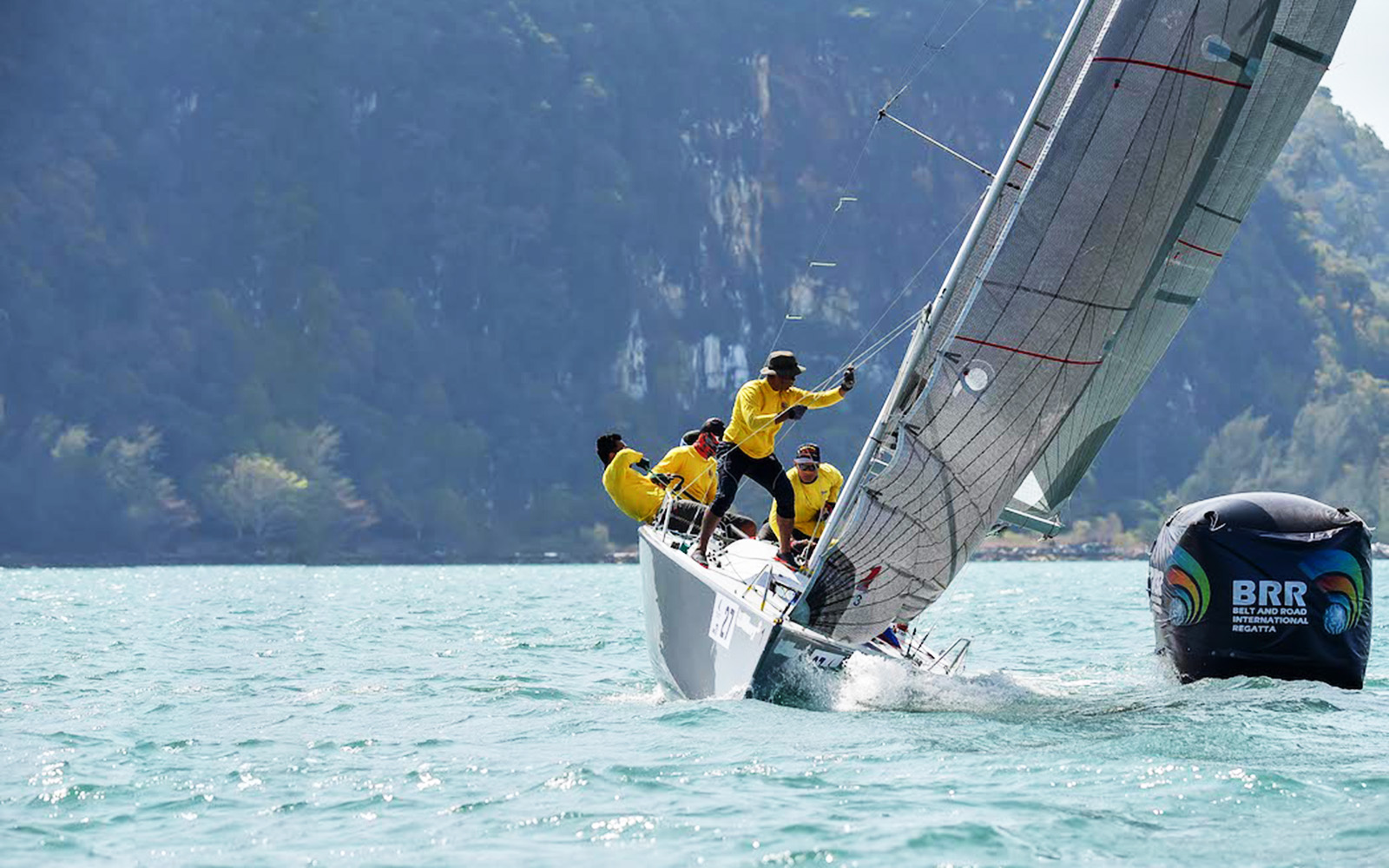
Held in the beautiful island of Langkawi, this is one of the most significant and popular regattas of Southeast Asia. Royal Langkawi International Regatta dates back to 2003, attracting more and more sailing professionals and enthusiasts. Every year, more than 40 yachts compete for the grand prize.
Fraser’s Hill International Bird Race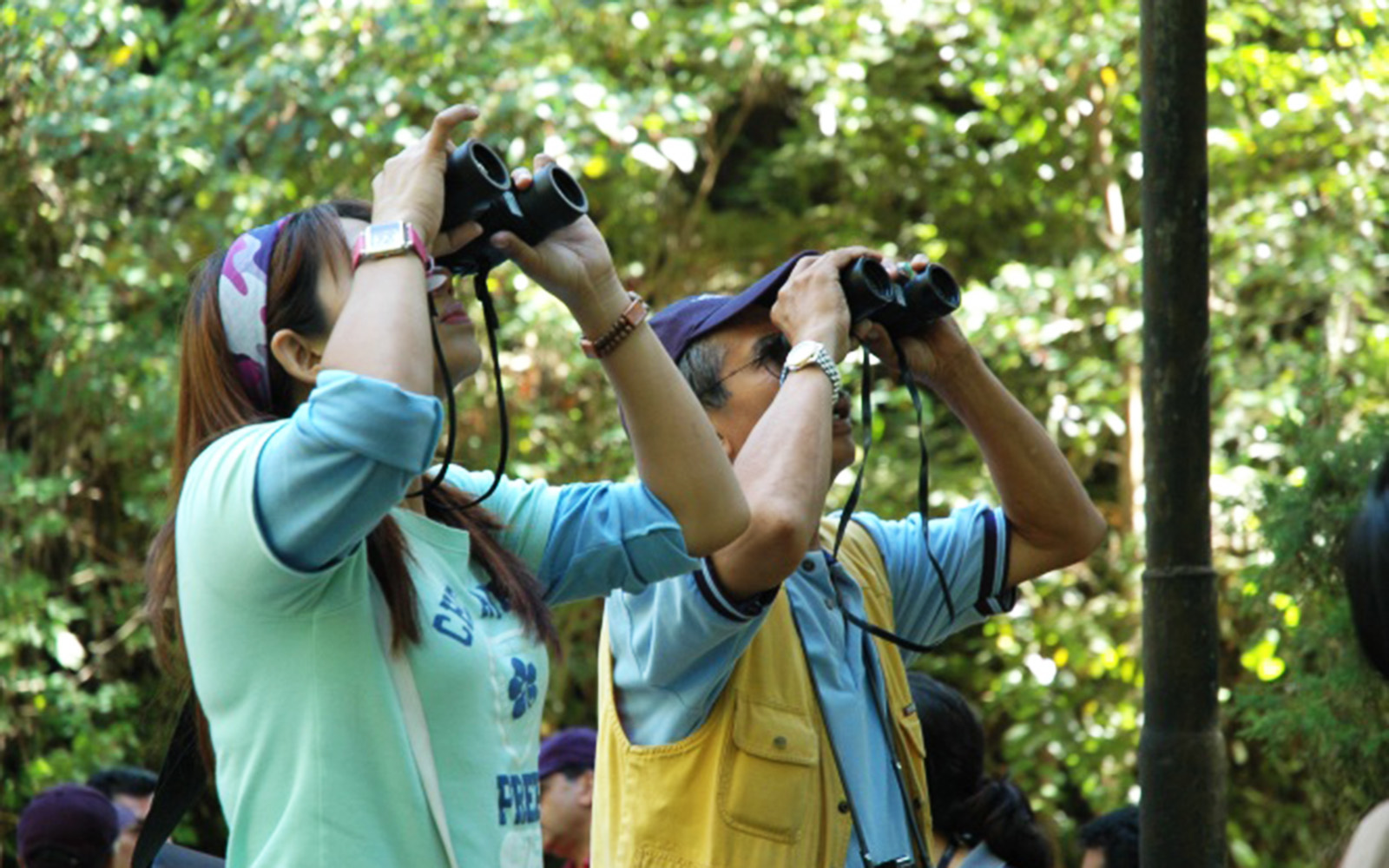
Located about 100km from Kuala Lumpur, in the state of Pahang, Fraser’s Hill is often referred to as a first-class bird-watching destination in Southeast Asia since this highland paradise is home to more than 250 species of wild birds. Come November and December each year, the virtually untouched mountainous forests of Fraser’s Hill will receive many species of newcomers, that is the migratory species that fly across from places as far as northern Siberia of Russia and islands north of Japan and neighboring landmass, to seek new feeding grounds as well as to escape the freezing winter up north. The sightings of Siberian thrush are often reported and they are truly a rare treat to ardent bird watchers. Normally these migratory species stay around in Fraser’s Hill for a couple of months before migrating southwards to Australia and New Zealand. They will fly back home to the north in March and April when the sun is getting sunnier.